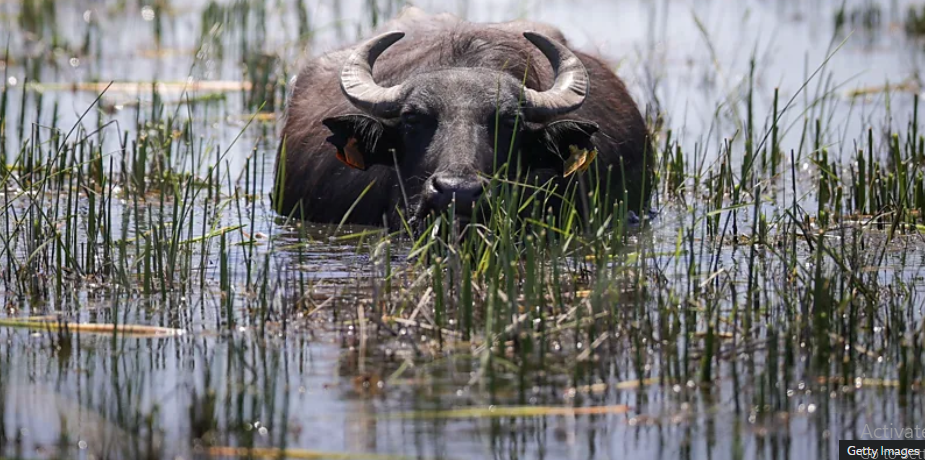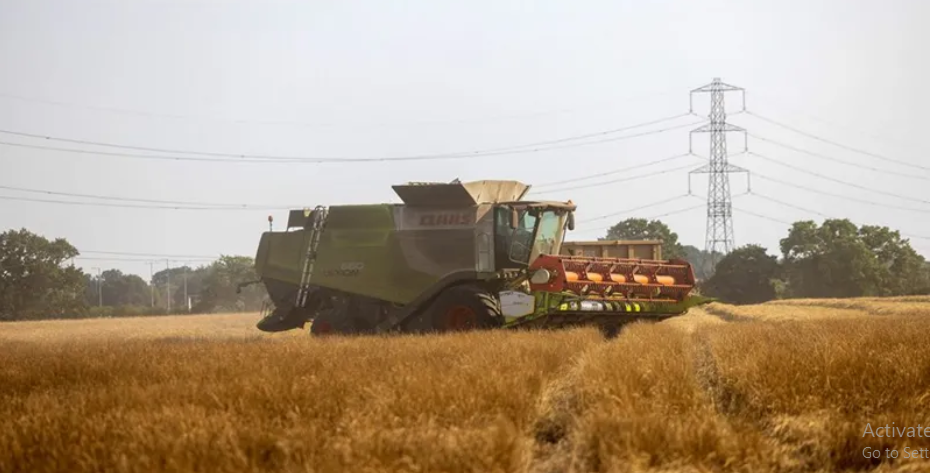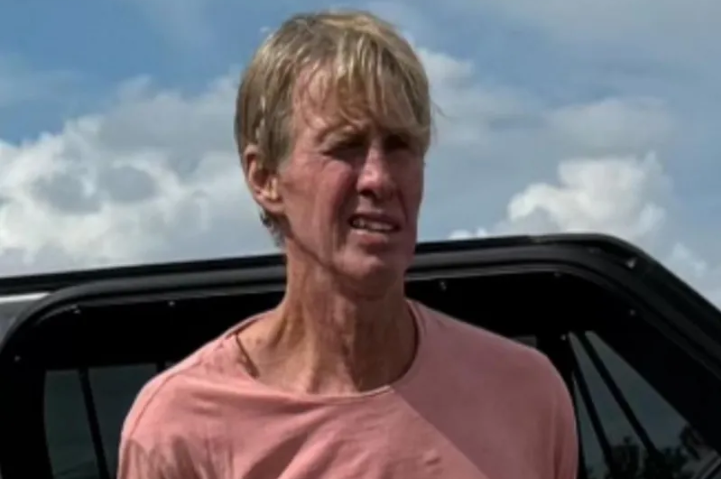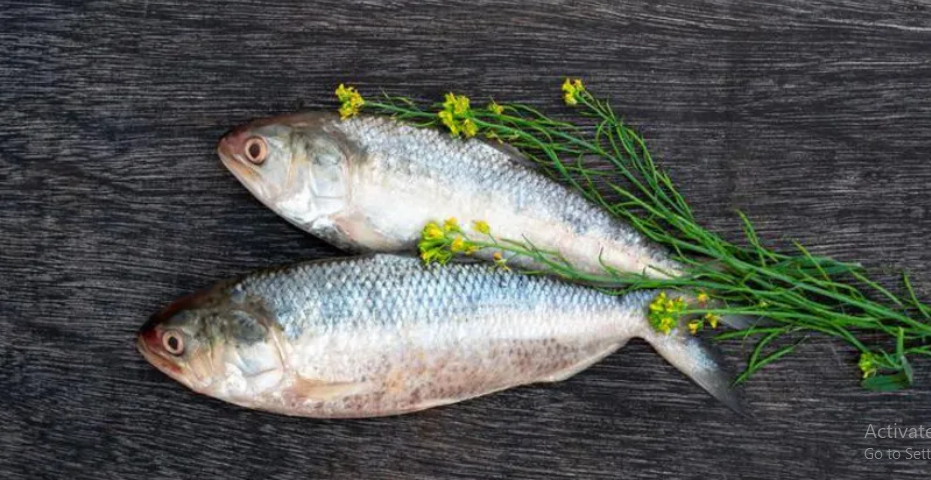When water buffalo make a home for themselves in abandoned spaces, they can bring with them a rich array of frogs, bats and plant life.

Each autumn, as tadpoles outgrow their tails, the Kizilirmak Delta on Turkey’s Black Sea erupts into chaotic commotion with the emergence of marsh frogs. While the fist-sized frogs are at home in the delta’s wetlands, dozens can be seen hopping out of the muddy waters to exploit one particularly strange and unusually lively hunting ground.
Climbing up a hillside of thick fur, the frogs encounter terrain that’s warm underfoot and an atmosphere that buzzes with flies. But there are risks to foraging here. The surface beneath their webbed feet twitches and shakes, and the entire floor is prone to lurching unpredictably through the air and collapsing into the mud.
This moving mountain of brawn and bugs is the muscular back of a massive water buffalo. On each of these giants roaming the delta, as many as 20 frogs or more can be found hitching a ride to their next meal.
In this – the first observed example of amphibians foraging on the body of a large mammal – Turkey’s marsh frogs have capitalised on one of the peculiar benefits that these huge animals bring to their wetland environments: their knack for attracting flies. Yet the frogs are just one of countless species worldwide, from bats to bog grasses, finding their surroundings transformed and their fates improved by the presence of buffalo.
Over the course of more than 3,000 years since the water buffalo were first domesticated in Asia, these half-tonne mammals have spread around the world. Today they are estimated to number more than 200 million across 77 countries on five continents. For generations they were prized as powerful plough-pulling draft animals and providers of nutritious milk. In recent years buffalo have begun to earn a reputation among conservationists as handy landscape managers and a crucially important ecosystem engineer.
Built for wetlands
Not to be confused with the bison of the American plains (often known as “buffalo” in North America), Asian water buffalo evolved to thrive in wetlands. They have wide, splayed hooves “like mini-shovels that spread out” to give them traction in damp and boggy land, says Alan McElligott, an associate professor of animal behaviour and welfare at City University of Hong Kong. This solid footing, plus flexible joints around their ankles, allows them to comfortably cross swamps, marshes and floodplains where most domesticated animals, like cows and horses, fear to tread.
In thousands of years since domestication, buffalo have been selectively bred and today the United Nations Food and Agriculture Organization recognises more than 100 specially adapted breeds. Buffalo can be broadly divided into river buffalo, which are common in India, the Middle East and Eastern Europe, and smaller swamp buffalo, found across Bangladesh, China and Southeast Asia. River buffalo have often been bred for milk and typically prefer deep water, while swamp buffalo are usually bred as draft animals and are happiest wallowing in mud puddles. Breeds range from the heavy, hairy Romania buffalo (a river breed that can survive hard winters) to the Buffalypso, the swamp-river crossbreed that was bred to live on sugar plantation scraps in the hot Caribbean climate of Trinidad.
Much like Arabian camels – which are so well suited to deserts that humans have transported them to deserts the world over – buffalo’s fitness on challenging terrain has been their passport to travel widely. Introduced by farmers into wetlands from Brazil to Australia, their hardiness owes as much to their eating habits.
“They’re big. They’re not selective feeders. They have a very broad mouth,” says McElligott. This helps them make light work of a variety of nutritionally poor aquatic plants and grasses, he says.
Domesticated buffalo have long had a justified reputation as gentle giants, McElligott says, which remains largely true of Hong Kong’s population, the “feral” descendants of farmed buffalo which now roam free. Conflicts with humans do happen, such as when males fight during mating season, McElligott says. But water buffalo can be docile enough to ride, as demonstrated by one Brazilian police force.
McElligott leads City University’s feral buffalo project, which is piecing together research that shows how feral buffalo on Lantau Island in west Hong Kong interact with human neighbours and impact these ecosystems. Ecological monitoring in areas where buffalo roam has found that they help trees grow by grazing back grasses, clear invasive plants, and create biodiverse wetland clearings.
In Hong Kong, where many rice paddies have been abandoned amid intense urbanisation, former rice farms that are now grazed by buffalo have been found to have greater biodiversity than rice fields without the bovines. But City University’s project aims to build a better picture of how free-roaming feral buffalo – the escaped descendants from livestock that pulled ploughs on rice paddies – act as keystone engineers of Hong Kong’s wetlands.
On a walk around Lantau Island, a short subway ride from the skyscrapers of central Hong Kong, McElligott sees buffalo traces all around. The animals dig wallows – ponds or mud puddles – to keep cool and protect them from biting insects. During the rainy season, these are filled with small insects, amphibians and fish, McElligott says. “In the summer, lots of invertebrates are probably breeding in those things.” The invertebrates are food sources for frogs and likely by reptiles such as snakes, he adds.
Despite the water buffalo’s global spread, crucial information about the bovines, such as population distribution and their precise impacts on aquatic systems, remains unknown. When feral populations grow to excessive numbers, with few predators to keep numbers in check, the ecological impacts can be disastrous. In Australia’s Northern Territories, there are estimated to be more than 200,000 feral buffalo, which can damage and divert waterways and disturb native geese. Along with feral horses, donkeys and cows, they have contributed to declining biodiversity.
Indeed, the disturbance that buffalo bring isn’t always welcome – as one family in Essex, eastern England, found out when they awoke to find 20 wallowing in their swimming pool – but for some landscapes it can make a critical difference.














